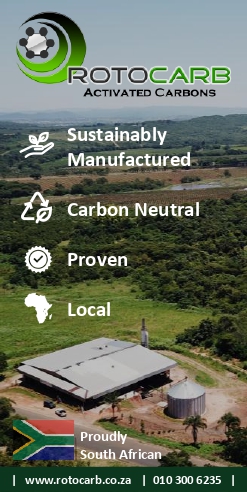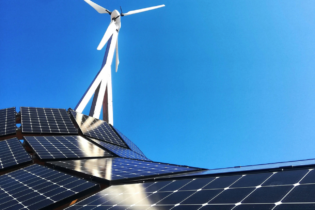As we observe #WorldEarthDay on 22 April 2024, Alison Groves, Director: Discipline Lead: Built Ecology, WSP in Africa and John Rammutla, Principal Associate: Highways, WSP in Africa, examine the theme “Planet vs Plastics” – and the role of circular economy thinking in managing plastic waste towards a NetZero future.
 By 2050, global cities could produce 3.88 billion tonnes of waste every single year. Plastic is a significant contributor to this number. Humanity produces around 460 million tonnes of plastic every year, a figure that is forecast to triple by 2060. Just under half goes to landfill, 17% is incinerated and 15% is collected for recycling, although less than 9% is actually recycled. The remaining 22% ends up in the environment, much of it in the ocean. It’s a problem that can only hinder the global transition towards NetZero — unless we do something about it. Can the circular economy save us from drowning in our own wastefulness?
By 2050, global cities could produce 3.88 billion tonnes of waste every single year. Plastic is a significant contributor to this number. Humanity produces around 460 million tonnes of plastic every year, a figure that is forecast to triple by 2060. Just under half goes to landfill, 17% is incinerated and 15% is collected for recycling, although less than 9% is actually recycled. The remaining 22% ends up in the environment, much of it in the ocean. It’s a problem that can only hinder the global transition towards NetZero — unless we do something about it. Can the circular economy save us from drowning in our own wastefulness?
 Circularity starts at home
As an idea, the circular economy is rapidly gaining traction. Whether at company, city, or national level, there is a growing recognition that resources are finite, waste is costly, and to deposit ever greater quantities of stuff in the ground is unsustainable. While plastic is an extremely useful invention that has played a large role in human advancement, the dark side of this invention is disposability. The convenience of single-use plastic needs to be rethought to ensure it has a longer, more useful lifespan.
Eliminating single-use plastics – such as disposable straws, utensils, beverage and food packaging, plastic bags, disposable pens and even wet wipes – is a good place to start reducing waste.
“Reducing the use of single-use plastic requires a shift towards a more circular and sustainable economy, starting in our homes,” says Groves. “We all know the three Rs – reduce, reuse, recycle – and this is still the most accessible way for us as individuals and households to combat plastic waste. We can maintain our awareness of how single-use plastic impacts on the environment. We can refuse to use single-use plastics in our homes and offices wherever possible by choosing products that don’t have plastic packaging or – if this isn’t possible – choosing reusable plastics or bulk items instead of single servings and avoiding products with non-recyclable content. We can seek out recycled and reusable alternatives and separate plastics from our waste for recycling.”
Large scale impact, however, demands that governments implement policies that support a circular economy, and that organisations throughout the production value chain move away from the traditional, linear process of resource extraction, manufacture, use and disposal towards an approach in which things are instead reused or recycled repeatedly, to maximise the lifespan of materials almost indefinitely. This could apply to anything from plastic bags to clothes to entire buildings. To make this more achievable, Groves advocates for clearer labelling of plastics to make it easier to sort in the recycling sphere, and avoiding composite plastics and plastics that are mixed with other components – such as those used to package potato chips – as these types of plastics are less recyclable.
Scaling up
“Engineering, sustainability and environmental professionals are needed in every industry to monitor initiatives that are designed with circularity in mind, and determine their viability for local application,” says Groves. “For example, the construction sectors must not be overlooked in the drive towards achieving Net Zero and can adopt a more circular approach to reduce their overall contribution to carbon emissions and waste production.”
Rammutla agrees. “In infrastructure construction, South African engineers can lead the way, where local engineers have developed customised road design and construction technologies that are viewed as innovative globally. Recycling existing road materials, and the use of so-called deeply balanced pavement structures, have contributed to the development of an extensive road network at a fraction of what it would cost in most developed countries.”
Circularity starts at home
As an idea, the circular economy is rapidly gaining traction. Whether at company, city, or national level, there is a growing recognition that resources are finite, waste is costly, and to deposit ever greater quantities of stuff in the ground is unsustainable. While plastic is an extremely useful invention that has played a large role in human advancement, the dark side of this invention is disposability. The convenience of single-use plastic needs to be rethought to ensure it has a longer, more useful lifespan.
Eliminating single-use plastics – such as disposable straws, utensils, beverage and food packaging, plastic bags, disposable pens and even wet wipes – is a good place to start reducing waste.
“Reducing the use of single-use plastic requires a shift towards a more circular and sustainable economy, starting in our homes,” says Groves. “We all know the three Rs – reduce, reuse, recycle – and this is still the most accessible way for us as individuals and households to combat plastic waste. We can maintain our awareness of how single-use plastic impacts on the environment. We can refuse to use single-use plastics in our homes and offices wherever possible by choosing products that don’t have plastic packaging or – if this isn’t possible – choosing reusable plastics or bulk items instead of single servings and avoiding products with non-recyclable content. We can seek out recycled and reusable alternatives and separate plastics from our waste for recycling.”
Large scale impact, however, demands that governments implement policies that support a circular economy, and that organisations throughout the production value chain move away from the traditional, linear process of resource extraction, manufacture, use and disposal towards an approach in which things are instead reused or recycled repeatedly, to maximise the lifespan of materials almost indefinitely. This could apply to anything from plastic bags to clothes to entire buildings. To make this more achievable, Groves advocates for clearer labelling of plastics to make it easier to sort in the recycling sphere, and avoiding composite plastics and plastics that are mixed with other components – such as those used to package potato chips – as these types of plastics are less recyclable.
Scaling up
“Engineering, sustainability and environmental professionals are needed in every industry to monitor initiatives that are designed with circularity in mind, and determine their viability for local application,” says Groves. “For example, the construction sectors must not be overlooked in the drive towards achieving Net Zero and can adopt a more circular approach to reduce their overall contribution to carbon emissions and waste production.”
Rammutla agrees. “In infrastructure construction, South African engineers can lead the way, where local engineers have developed customised road design and construction technologies that are viewed as innovative globally. Recycling existing road materials, and the use of so-called deeply balanced pavement structures, have contributed to the development of an extensive road network at a fraction of what it would cost in most developed countries.”Currently, the asphalt used for the surfacing of roads locally comprises 20% to 25% recycled materials. But we can do more, Rammutla says. “Innovative materials can replace traditional carbon intense materials. Asphalt can often be replaced with recycled plastics or rubber from recycled tyres.”
Groves says replacing carbon-intensive construction materials in buildings with low carbon alternatives can also play a key role in reducing the construction industry’s overall carbon emissions and waste contributions. Steel can be replaced with fibre-reinforced plastic or polymers, or even carbon fibre and graphene, under the right circumstances. But not all plastic is equally easy to recycle and converting it for reuse in a more sustainable form isn’t an all-encompassing solution. Plastic to energy There is another way of dealing with plastic: burning it. In Scandinavia, waste-to-energy (WtE) plants incinerate high-energy residual waste, including nonrecyclable plastic along with other high-energy wastes such as timber and wood products. The heat is used to generate electricity and to warm water for local district heating systems, reducing the need to burn virgin fossil fuel for power and preventing a wide range of plastics from going to landfill. They do not end up in the environment, and the volume of waste is vastly reduced. “The exhaust from these plants is well treated so most of what exits the chimney is water vapour,” Rammutla explains. “The residual slag is pretty nasty stuff though, and the waste from the scrubbing also contains high concentrations of hazardous substances.” Unpleasant though these residues are, they are at least relatively small in volume, and there is some value in concentrating them so that they can be disposed of appropriately in specialised landfill. “New technologies are also putting some of these wastes to use,” Rammutla continues, “for example, in new types of concrete where the toxic chemicals can be fixed and rendered harmless.” Could WtE be considered as part of the solution to meet South Africa’s energy requirements as it moves away from coal-fired power stations? According to the latest available statistics, South Africa generates approximately 122 million tonnes of waste per year, of which only 10% is recycled or recovered for other uses. This leaves at least 90% of the country’s waste entering landfills or worse – being dumped illegally. “We certainly seem to be producing enough waste to burn,” Groves says. “Though there are probably more cost-effective ways to deal with our energy and our waste challenges at this stage, WtE is an initiative worth monitoring for potential local applications in the future. Should we explore it, it would be wise to prioritise low-grade, contaminated plastic that can’t be recycled into more useful products. This would help to clean up our landscape and prevent these kinds of waste ending up, ultimately, in the environment. WtE is one way to give some value to plastic and ensure that it is collected and removed.” “Supporting our clients in reducing their waste and emissions remains a primary objective of our work. We believe that employing our Future Ready® approach and circular economy thinking throughout our project delivery process has the potential to make a significant contribution to decarbonisation of projects in the construction sectors,” Groves concludes. WSP in Africa is hiring! To find out more about available opportunities, check out the Careers page on our website or look out for updates on our LinkedIn page, @WSPinAfrica.







